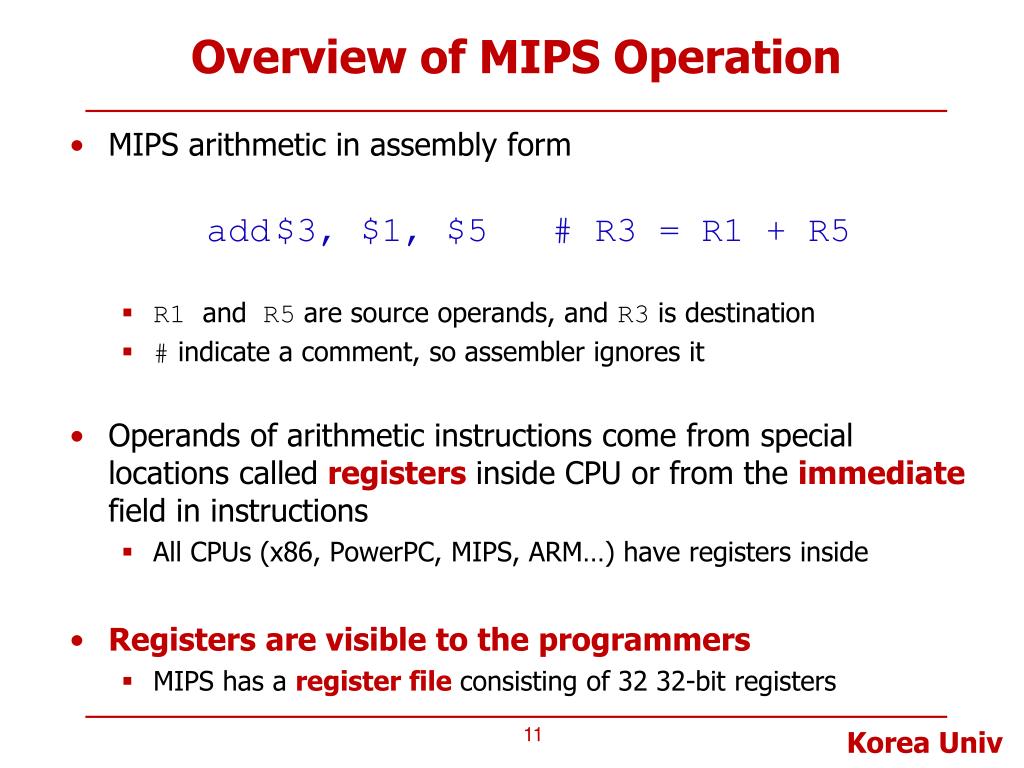
Memory OrganizationBytes are load/store units, but most data items use larger wordsFor MIPS, a word is 32 bits or 4 bytes.Ģ32 bytes with byte addresses from 0 to 232-1230 words with byte addresses 0, 4, 8. Memory OrganizationViewed as a large single-dimension array with access by addressA memory address is an index into the memory arrayByte addressing means that the index points to a byte of memory, and that the unit of memory accessed by a load/store is a byte0123456.8 bits of data8 bits of data8 bits of data8 bits of data8 bits of data8 bits of data8 bits of data MemoryArithmetic instructions operands must be in registersMIPS has 32 registersCompiler associates variables with registersWhat about programs with lots of variables (arrays, etc.)? Use memory, load/store operations to transfer data from memory to register if not enough registers spill registers to memoryMIPS is a load/store architecture
Mips iformat code#
Performance penalty: high-level code translates to denser machine code. Operands must be in registers only 32 registers provided (which require 5 bits to select one register).īut this complicates code translation. MIPS ArithmeticInstructions are regular which make simple hardware! And Simpler hardware reduces design time and manufacturing cost.

MIPS ArithmeticAll MIPS arithmetic instructions have 3 operandsOperand order is fixed (e.g., destination first) Example: C code: A = B + C MIPS code:add $s0, $s1, $s2

Instructions: OverviewWell be working with the MIPS instruction set architectureinspired most architectures developed since the 80'sused by NEC, Nintendo, Silicon Graphics, Sonythe name is not related to millions of instructions per second !it stands for microcomputer without interlocked pipeline stages !ĭesign goals: maximize performance and minimize cost and reduce design time MIPS Instructions: Language of the Machine


 0 kommentar(er)
0 kommentar(er)
